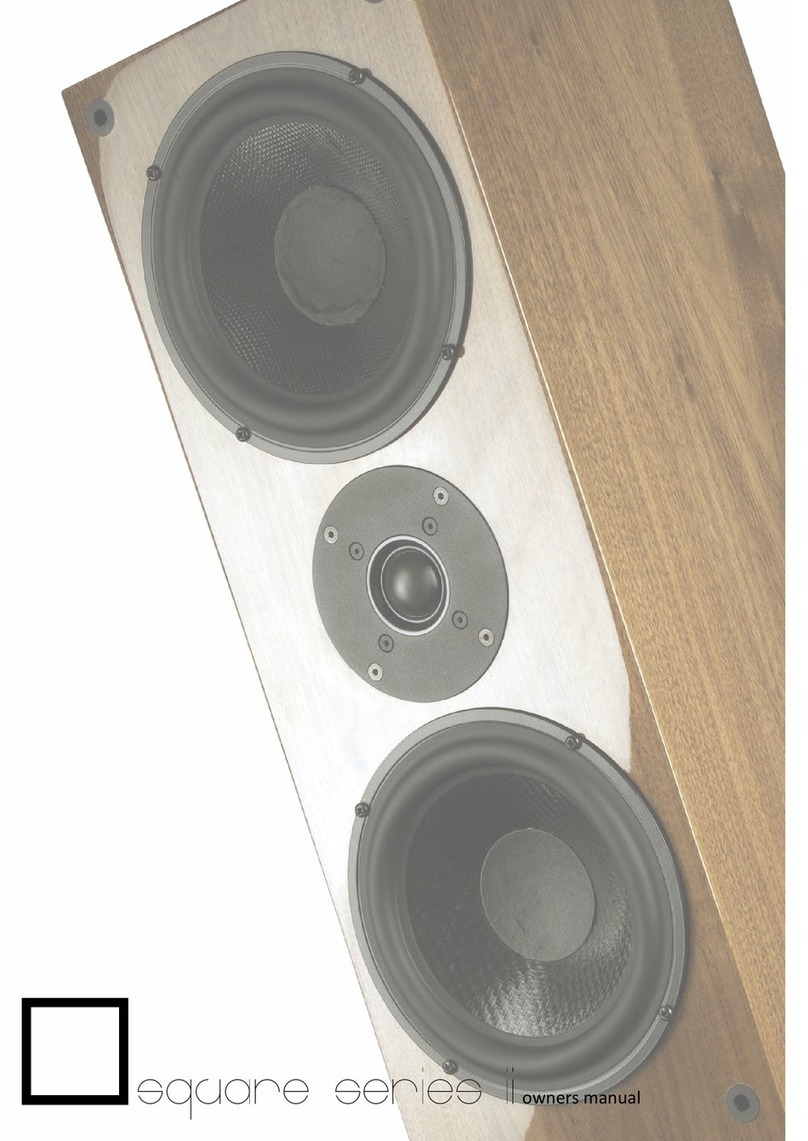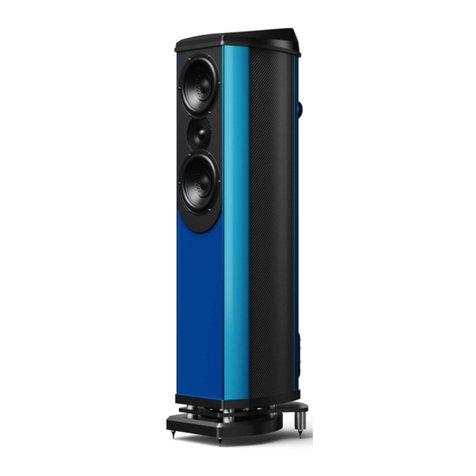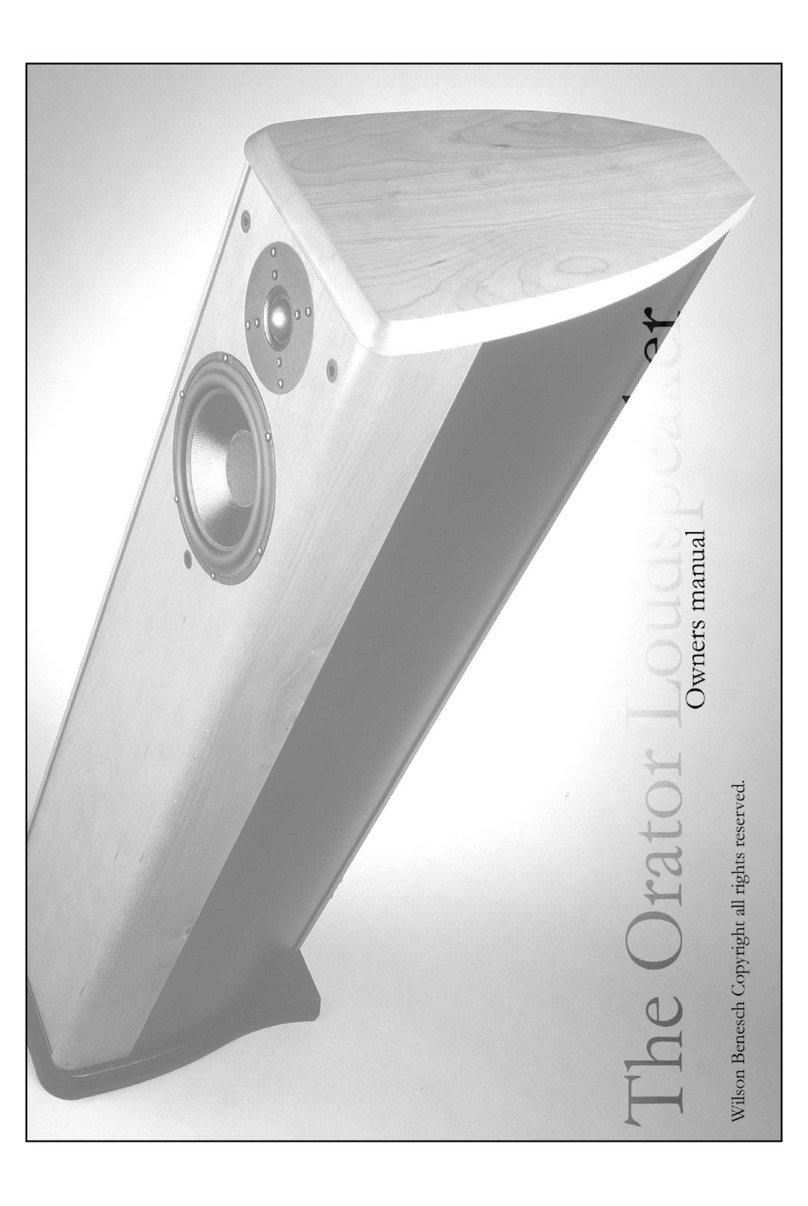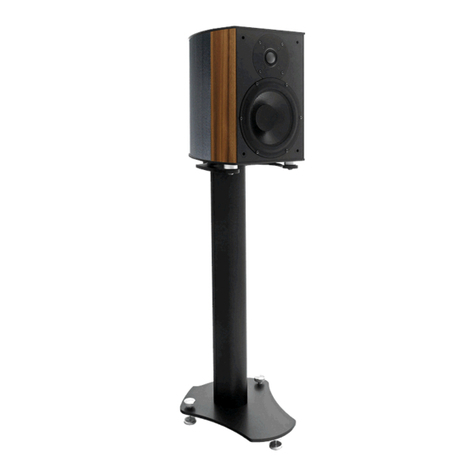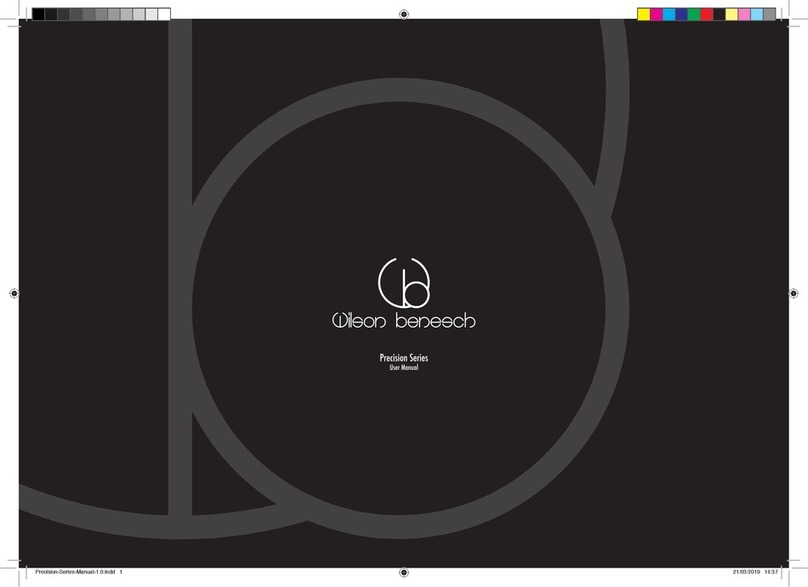
PRECISION SERIES MANUAL REV 1.3
7
2.2 Reection, Absorption, Diffusion
The upper-range of frequencies is generally affected more by room contents than room shape. The surfaces and how they reect, absorb or diffuse acoustic energy will tend
to describe the ‘sound’ of a room. As is the case with all forms of energy, acoustic energy cannot be destroyed it can only be converted or reected. The shape, thickness and
material type of a surface will determine how the sound is reected, how much of it is reected and also how much is absorbed and converted into heat or kinetic energy.
Depending on the frequencies in question, the thickness, density and material of the surface or boundary, some energy may pass through entirely. This behaviour is
commonly observed in the lower range of frequencies, being comprised of larger wavelengths that can pass through wall or ceiling boundaries and into an adjacent room,
while the upper frequencies are either absorbed or reected back inside the listening room.
Diffusion occurs when acoustic energy is reected by a surface and dispersed in a random and/or disordered fashion. Usually, diffusion will occur when the acoustic energy
meets a non-uniform or uneven surface. A tightly packed bookshelf with books of different sizes and proles is one example of a commonly found listening room boundary
which can result in diffusion of the upper frequencies.
Diffusion of sound energy at key areas of the listening room is often less damaging to system accuracy and therefore preferable to orderly reection. In the case of reection,
the quantity of indirect sound reaching the listening position will be greater and therefore more inuential. This mixing of indirect and direct sound at the listening position
can result in audible inaccuracies and artefacts.
It should be appreciated that sound waves behave in much the same way as light waves or ‘rays’. To imagine the loudspeaker driver as a oodlight can be helpful in
determining which areas of the listening space are critical to the performance and accuracy of the system. The key “rst points of reection” can be roughly identied by
having an assistant hold a mirror on each side wall while you are positioned in the listening chair. Once the speaker drivers can be seen in the mirror from the listening
position the impact of this identied area should be considered in light of the above basic principles. By the same token, the rst reection point on the ceiling can also be
considered for its inuence as the rst point of reection.
Although many listening rooms are unsuitable for professional acoustic treatment products due to their dual role as a living and listening space, it can still be possible to
make small but appreciable improvements by rearranging furniture, system components and of course the listening position. Consider the changeability of rooms; if the
room is dressed with heavy curtains simply changing the curtains position can alter the balance of the system. It is the goal that is the guide and the owner is the pivot in
this subtle balancing act.
